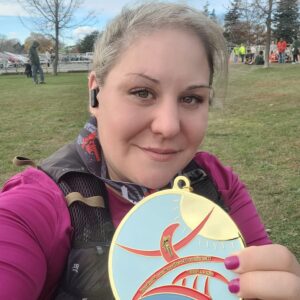
What is it that makes a young woman decide to run 831 kilometres along the length of one of the most notorious oil pipelines in Canada? Relationships grounded in mutual respect, dedication and love for the water are some of the reasons that motivated Rachel Thevenard to run against Line 9.
On Dec. 5, 2015 in Aamjiwnaang, Ontario, Thevenard began her journey. Enbridge began a controversial journey of sorts on the same day. Despite legal opposition from Chippewa of the Thames First Nation (COTTFN), Enbridge turned Line 9 on and began to ship 240,000 barrels of oil per day through 18 different First Nations and through numerous watersheds, rivers and lakes.
“The [Line 9] project was so ridiculous that I didn’t think it was possible to be passed without consent,” explained Thevenard in a recent interview.
The Chippewas of the Thames First Nation have recently launched an appeal in the Supreme Court of Canada over the Crown’s lack of consultation with First Nations over the National Energy Board’s decision to allow pipelines through their ancestral territories.
According to COTTFN Chief Leslee White-Eye, “In our Indigenous beliefs, all decisions are based on the next seven generations therefore we must look at the potential hazards or threat towards our water.”
This assertive directive helped Thevenard decide to use her body to, “raise money for Chippewas of the Thames First Nation upcoming legal battle and to raise awareness of the dangers of [Line 9].”
Chippewas of the Thames First Nation are appealing the precedent-setting decision by the Federal Court of Appeal, which allows the Crown to ignore its constitutional duty to consult with Indigenous nations.
“The corporations running the pipelines shouldn’t be the ones fulfilling the constitutional obligations,” says White-Eye.
The National Energy Board is a third party institution that has removed the duty to consult from the Crown and placed the duty to consult in the hands of corporations like Enbridge. Considering that the land and water have always been at the core of Anishnaabek and Haudenosaunee existence on Turtle Island, it is crucial that jurisdiction be upheld and respected.
Allowing the Crown and corporations to run their economic agendas at the expense of the water, the land, the people and the animals whose livelihoods are dependent on these systems, is something that Thevenard refuses to let go unchecked.
Along the 831 kilometre journey, Thevenard has made friends in many different First Nations. Perhaps, it is her humble demeanor and her fierce dedication to ensuring that justice prevails in terms of the relationship between the “occupying state and Indigenous peoples.”
Thevenard points out the need for Canadians to have a, “greater understanding of how the implementation of Indigenous human rights needs to happen.” The responsibility to protect the water and the land is ingrained in Indigenous worldviews, not only because we need it to live, but because it is our children and our children’s children that will have to deal with the repercussions of choices we make today.
Thevenard reached her final destination at Suncor’s refinery in Montreal, Que. on January 6, 2016 and shared that she, “feels great.”
With gratitude to her body for carrying her along all those miles, her journey serves as a reminder that perhaps, we too, must be grateful to the bodies that carry us every day. The bodies of water and the land that sustains us are living entities that deserve our dedicated protection and gratitude. The Thanksgiving Address is more than words, it is an agreement between our spirits and those living entities that sustain us every day. This is the authority we have as people who have existed on this territory since time immemorial.
When asked what needs to happen now, Thevenard emphatically replied, “The colonizer needs to listen to Indigenous peoples. We have to act now. Something has to change.”






